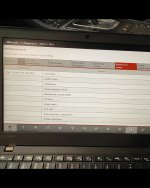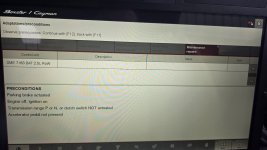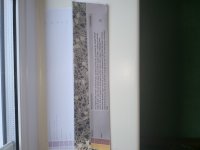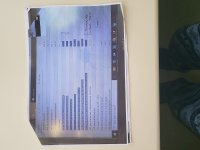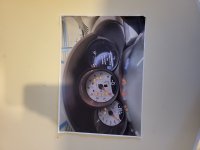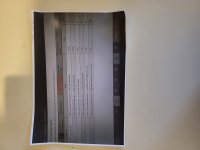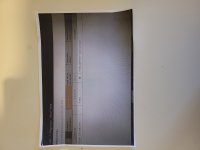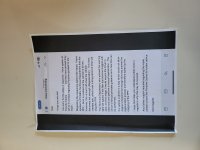Hi Guys & Girls
Without prejudice
Spoke last night to another owner thats been quoted 9K to replace his faulty GPF filter.
Its unbelievable that the Dealers are still carrying on with this blatant miss diagnosis of this fault on these cars.
If you put in Google this search text.
Whats the diagnostic protocol on a suspected blocked GPF filter
This is what comes back.
The diagnostic protocol for a suspected blocked Gasoline Particulate Filter (GPF) involves a combination of observing physical symptoms, using diagnostic scan tools, and performing targeted pressure tests.
Step 1: Initial Assessment and Symptom Verification
- Check Warning Lights: The most common sign is an illuminated GPF/PPF or engine management light on the dashboard.
- Observe Engine Performance: Look for symptoms such as reduced engine power, sluggish acceleration, the vehicle entering "limp mode," or difficulty starting.
- Note Other Signs: Be aware of a change in engine note, increased fuel consumption, an acrid smell from the exhaust, or excessive black smoke.
- Review Driving Habits: Frequent short trips can prevent the exhaust system from reaching the necessary temperature for passive regeneration, which is a common cause of GPF issues.
Step 2: Diagnostic Trouble Code (DTC) Retrieval
- Use an OBD-II Scanner: A professional diagnostic scan tool is used to retrieve specific GPF-related error codes, such as P2452, P2002, 1A2818, 1A280E, 1A280C, or 34D909. These codes provide a starting point for the diagnosis.
Step 3: Live Data Analysis and Sensor Testing
- Monitor Differential Pressure: Access the vehicle's live data to monitor the differential pressure sensor readings across the GPF.
- Readings should typically be below 15 millibars at idle and less than 80 millibars during full acceleration.
- Readings significantly above these values indicate a restriction requiring action.
- Fluctuating readings may suggest a faulty sensor or a split in a hose.
- Verify Sensor Accuracy: If live data seems erratic or inconsistent with symptoms, use a digital manometer or a Mityvac pressure gauge to manually verify the pressure readings.
- Check Soot Mass/Load: The diagnostic tool will also show the calculated soot mass or ash accumulation level, which determines if a regeneration is possible or if the filter needs professional cleaning/replacement.
Step 4: Further Inspection and Action
- Attempt Regeneration (if levels permit): If soot levels are not excessively high and the pressure is within a manageable range, a forced (active) or passive (extended road test) regeneration procedure may be initiated using the diagnostic tool or by driving at sustained high speeds (e.g., 40+ mph for 20-30 minutes).
- Inspect for Damage: If regeneration fails or soot levels are too high, use a borescope to inspect the GPF's internal structure (monolith) for damage.
- Chemical Cleaning/Replacement: A chemical on-vehicle cleaning process might be an option for stubborn blockages. If the filter is damaged or completely blocked, replacement is necessary.
- System Reset and Road Test: After any successful cleaning or replacement, the new GPF must be registered/initialised using the diagnostic software, fault codes must be cleared, and a post-repair road test conducted to ensure proper function.
Well, if you compare what Porsche tell their Dealers to do, reference the recent internal memo instructions, to what's written above, something is clearly very, very wrong.
Also on the Porsche memo below it didn't show you the K251 reading which is 4 down from the K231 reading showing 100% oil ash measured.
The millibar readings above, 15 at idle and 80 on acceleration are the same as hPa, on all our cars we have never seen any hPa readings higher than 6.00 hPa.
This K251 particular filter bank 1, differential pressure, current value, is very important, it tells us if excessive back pressure is present in our GPF filters when the 100% oil ash load measured is displayed.
Simply, if a very low pressure value is seen, then the GPF is definitely not blocked, and if no significant soot values are seen, then there is no need to do a regeneration.
Remember regenerations using diagnostic equipment are only required if you have high soot values. Physical Ash can not be removed by these regenerations, yet the Porsche memo clearly says they can, last paragraph.
Enclose again, a copy of a GPF report from one of our earlier cars showing the full GPF information on page 42 of vehicle analysis log.
You will see the K251 pressure was only 2.32 hPa.
This car had its modified GPF filter replaced by Porsche, paid for by Porsche, because we pointed out that these figures in this GPF report made no sense at all.
Sadly the oil ash load measured value is now at around 46% and the K251 differential pressure sensor reading is only at 2.65 hPa.
We are waiting for a response from Porsche Technical on why there modified filter has clearly not fixed this issue, and what they need to do next.
Because these cars seem not to have the facility to reset the oil ash %, especially after fitting new modified GPF filters. And the fact that they cannot reset the differential pressure sensor, after replacement is not good.
They are still carrying out regenerations and lots of road testing in an attempt to reset the values, that are now coming back.
Maybe this was the same issue way back in 2019, when the modified filters were being fitted.
I will let you draw your own conclusions.
Sorry to go on, sorry if I seem to repeat myself all the time, but its important that you have all the facts, because my phone keeps ringing, and our Porsche Dealers are still trying to get our owners to Pay for a filter that doesn't need replacing.
Dave




